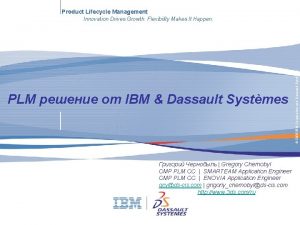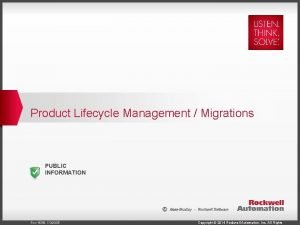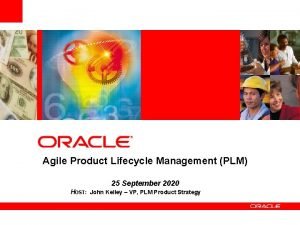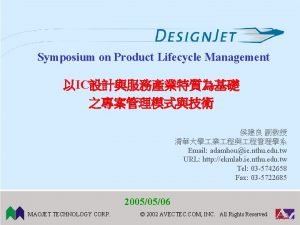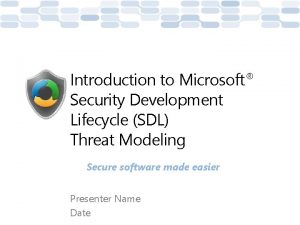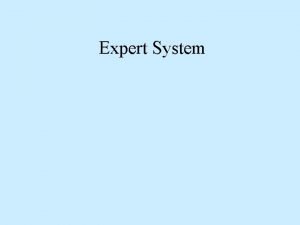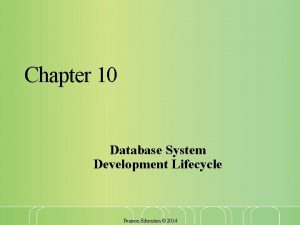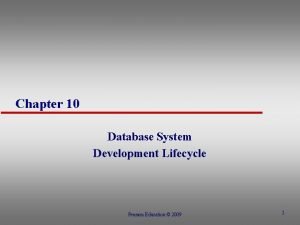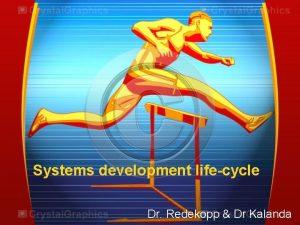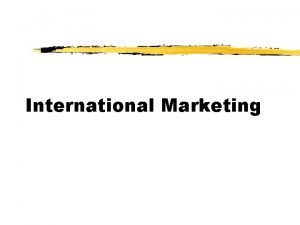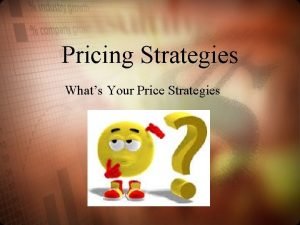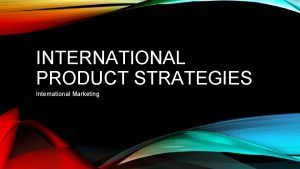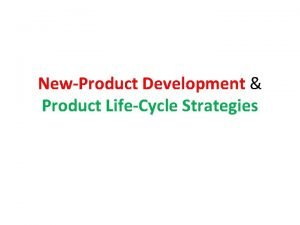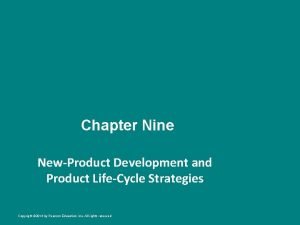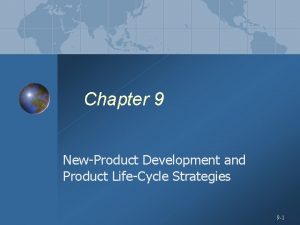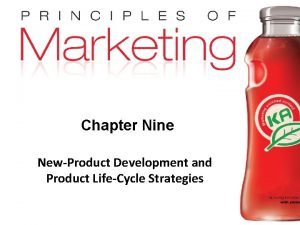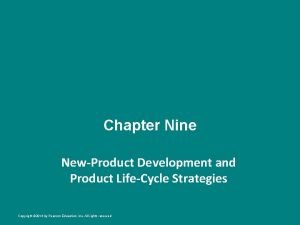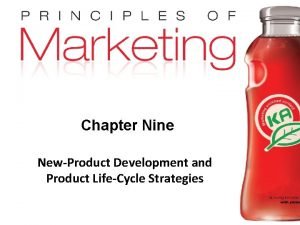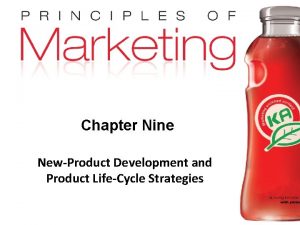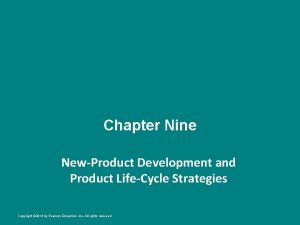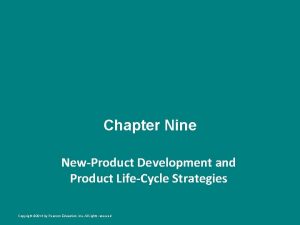Chapter 9 NewProduct Development and Product LifeCycle Strategies













- Slides: 13

Chapter 9 New-Product Development and Product Life-Cycle Strategies 1

Major Stages in New-Product Development Marketing Strategy Concept Development and Testing Idea Screening Idea Generation Business Analysis Product Development Test Marketing Commercialization 2

New Product Development Process Step 1. Idea Generation is the Systematic Search for New Product Ideas Obtained Internally From Employees and Also From: Customers Competitors Distributors Suppliers 3

New Product Development Process Step 2. Idea Screening Process to spot good ideas and drop poor ones as soon as possible. 4

Concept Development Turning an idea to concept calls for asking several questions: n n n Who will use the product? Infants, children, teenagers, young or middle-aged adults, or older adults. What primary benefit should this product offer? Taste, nutrition, refreshment, energy. When will people consume this drink? Breakfast, midmorning, lunch, mid-afternoon, dinner, late evening? 5

Concept Development Develop several concepts: n n n Concept 1: An instant breakfast drink for adults who want a quick nutritious breakfast without preparation Concept 2: A tasty snack drink for children to drink as a midday refreshment. Concept 3: A health supplement for older adults to drink in the late evening before they to to bed. 6

Concept Testing new-product with a group of target consumers to find out if the concepts have strong consumer appeal. n May be presented to consumers symbolically or physically, or a word or picture description. 7

New Product Development Process Step 4. Marketing Strategy Part One Describes Overall: Target Market Planned Product Positioning Sales & Profit Goals Market Share Part Two Describes First-Year: Product’s Planned Price Distribution Marketing Budget Part Three Describes Long-Term: Sales & Profit Goals Marketing Mix Strategy 8

Step 5. Business Analysis Step 6. Product Development Business Analysis Review of Product Sales, Costs, and Profits Projections to See if They Meet Company Objectives If No, Eliminate Product Concept If Yes, Move to Product Development 9

New Product Development Process Step 7. Test Marketing Standard Test Market Controlled Test Market Full marketing campaign in a small number of representative cities. A few stores that have agreed to carry new products for a fee. Simulated Test Market Test in a simulated shopping environment to a sample of consumers. 10

New Product Development Process Step 8. Commercialization is the Introduction of the New Product into the Marketplace. When is the Right Time to Introduce Product? Where to Launch a New Product? 11

Product Life Cycle Sales and Profits ($) Sales Profits Time Product Development Introduction Growth Maturity Decline Losses/ Investments ($) Sales and Profits Over the Product’s Life From Inception to Demise 12

Styles, fashions, and fads. The PLC concept can be applied to what are known as styles, fashions, and fads. n n n Style: A basic and distinctive mode of expressions Fashion: A currently accepted or popular style in a given field. Fad: A fashion that enters quickly, is adopted with great zeal, peaks early, and declines very quickly 13
 New product development and product life cycle strategies
New product development and product life cycle strategies Ibm plm
Ibm plm Rockwell product lifecycle
Rockwell product lifecycle Oracle innovation management
Oracle innovation management Agile bom management
Agile bom management Product lifecycle
Product lifecycle Microsoft security development lifecycle
Microsoft security development lifecycle Stages of expert system life cycle
Stages of expert system life cycle Database development life cycle in dbms
Database development life cycle in dbms Pearson education
Pearson education Dr redekopp
Dr redekopp Domestic market extension orientation example
Domestic market extension orientation example Product mix pricing strategy
Product mix pricing strategy Product strategies in international marketing
Product strategies in international marketing

